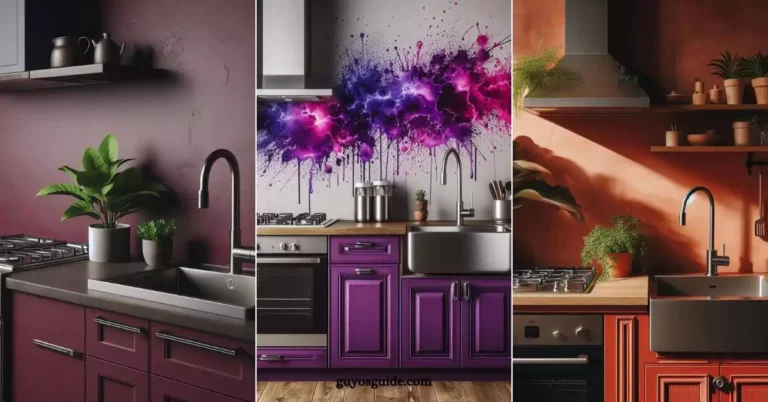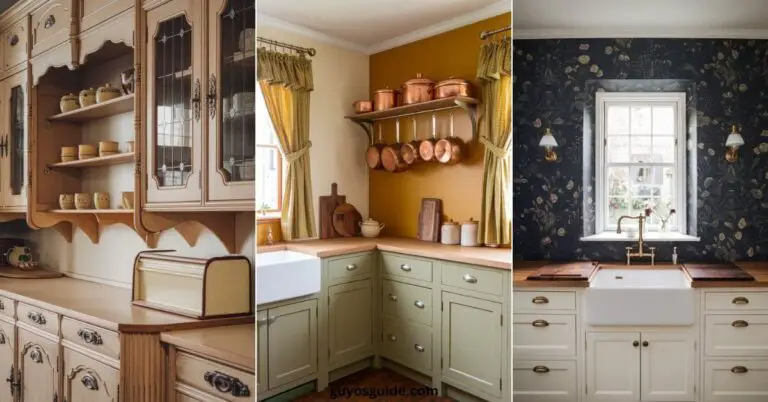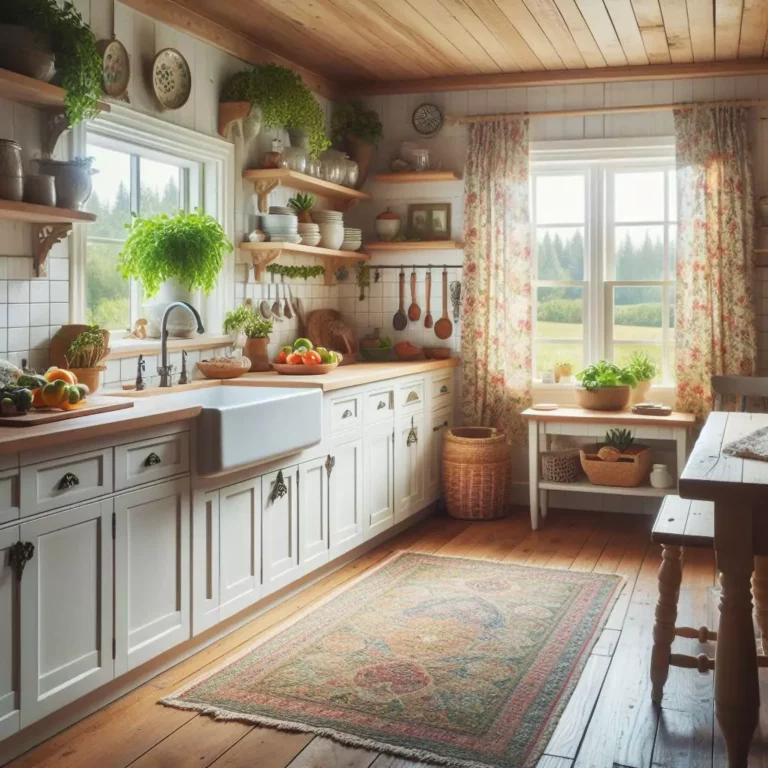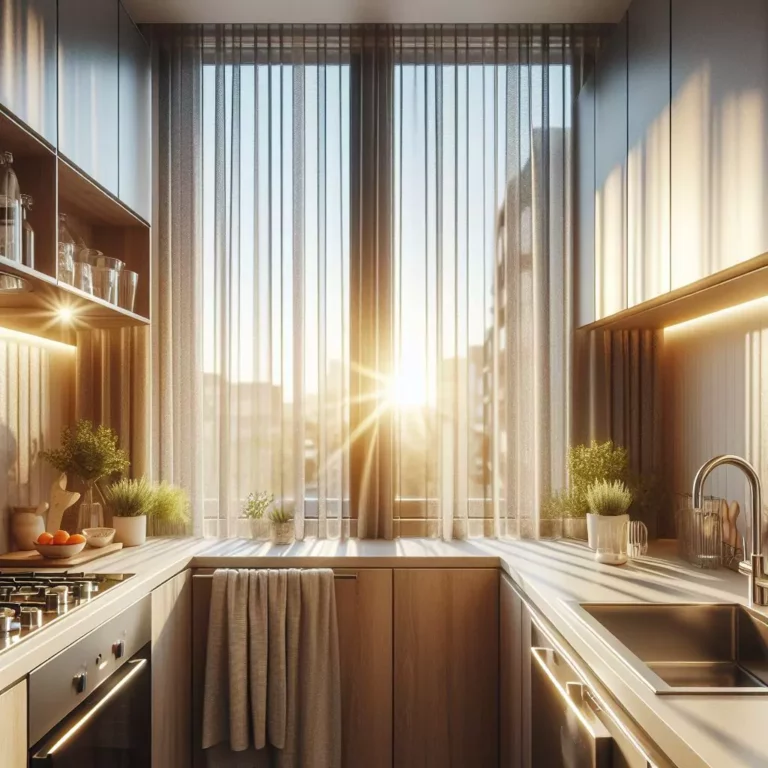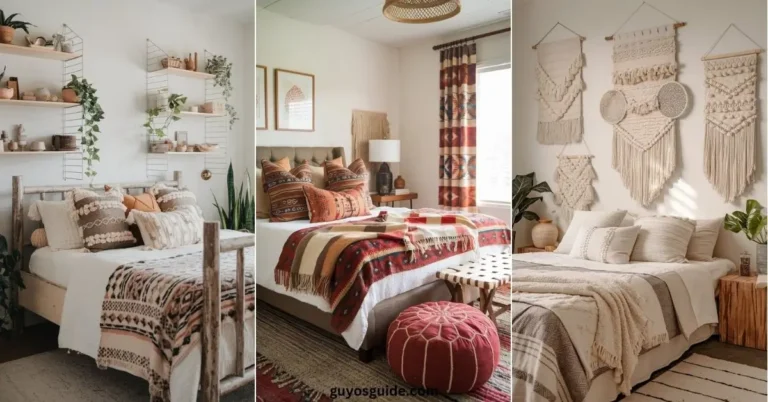25 Japandi Kitchen Ideas to Transform Your Home
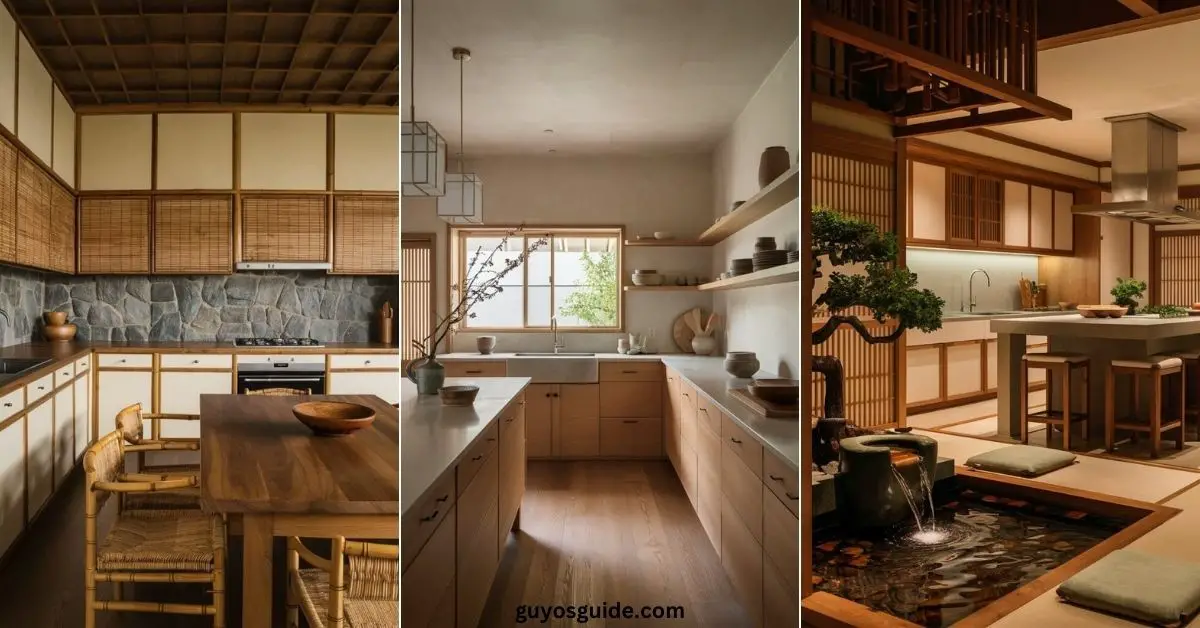
Some of the links in this post are affiliate links, meaning, at no additional cost to you, We will earn a commission if you click through and make a purchase.
Do you love the clean look of Japanese and Scandinavian design?
Japandi style blends the best of both!
In this article, we’ll explore beautiful and simple Japandi kitchen ideas to make your kitchen calm and stylish.
Let’s get started!
1. Embrace Minimalism
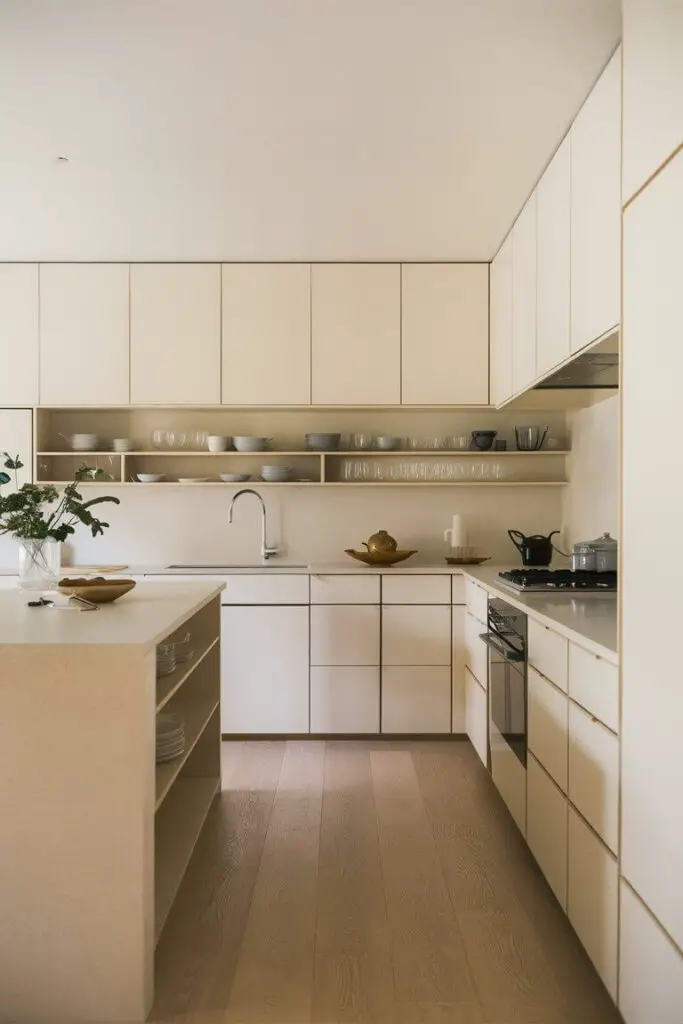
Keep your kitchen uncluttered and simple.
Japandi style focuses on functionality and clean lines, so opt for sleek cabinets, open shelving, and minimal decor to create a serene and organized space.
2. Use Natural Materials
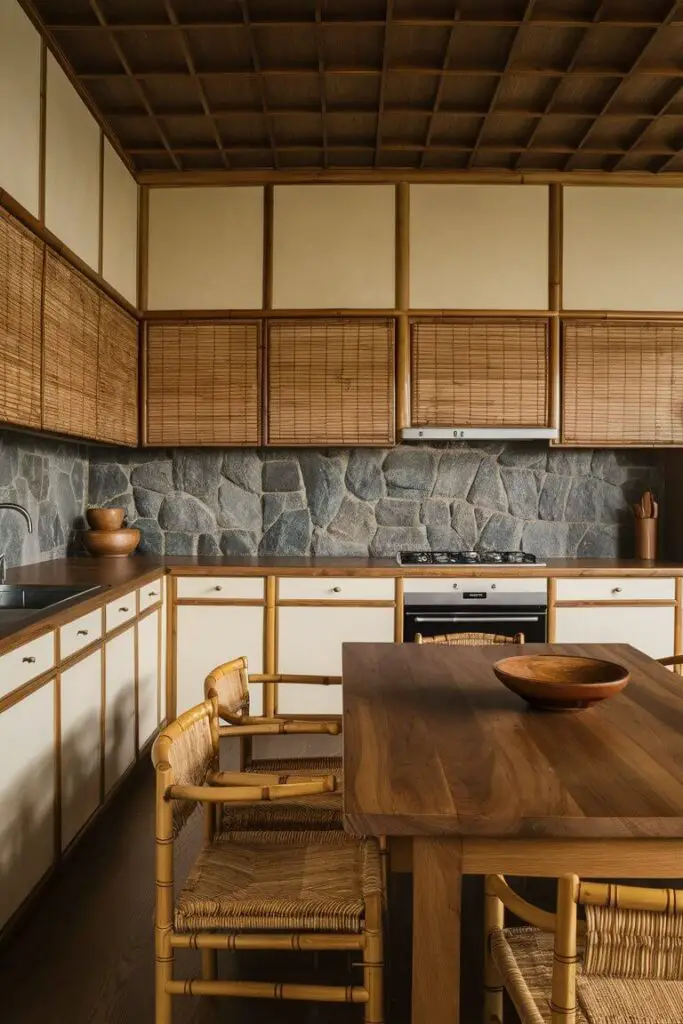
Incorporate natural materials such as wood, stone, and bamboo.
Wooden countertops, stone backsplashes, and bamboo accents bring warmth and texture, blending Japanese and Scandinavian aesthetics seamlessly.
3. Choose a Neutral Palette
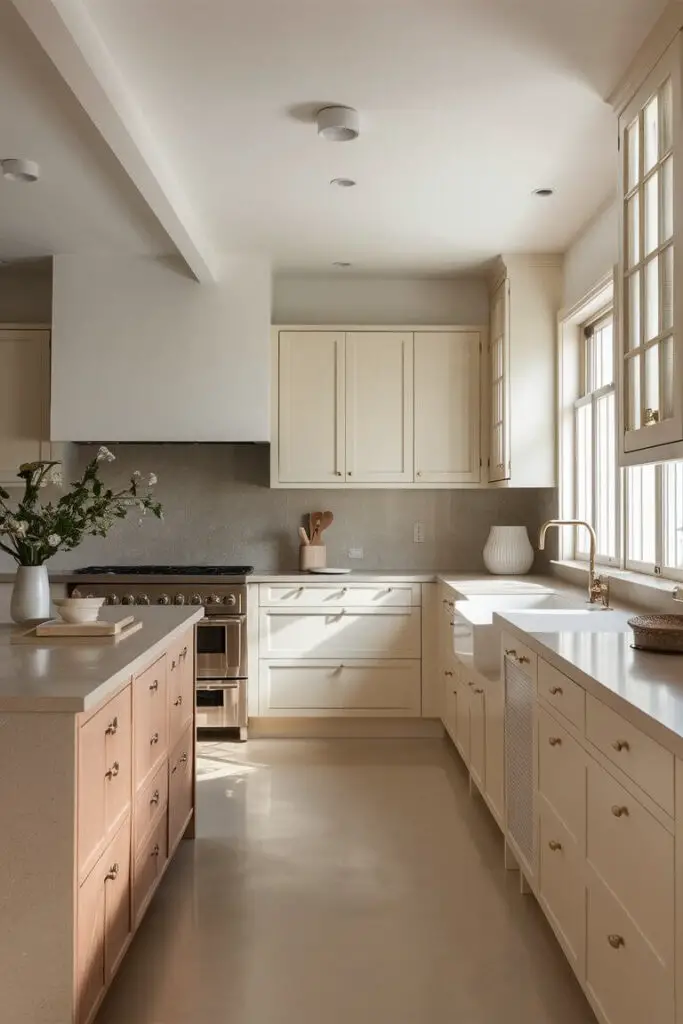
Stick to a neutral color palette with shades of white, beige, and gray.
These colors create a calm and soothing atmosphere, allowing the natural materials and clean design to shine.
4. Integrate Open Shelving

Replace upper cabinets with open shelving to keep the space airy and open.
Display neatly arranged dishware, plants, and minimal decor items to enhance the Japandi look.
5. Add Greenery
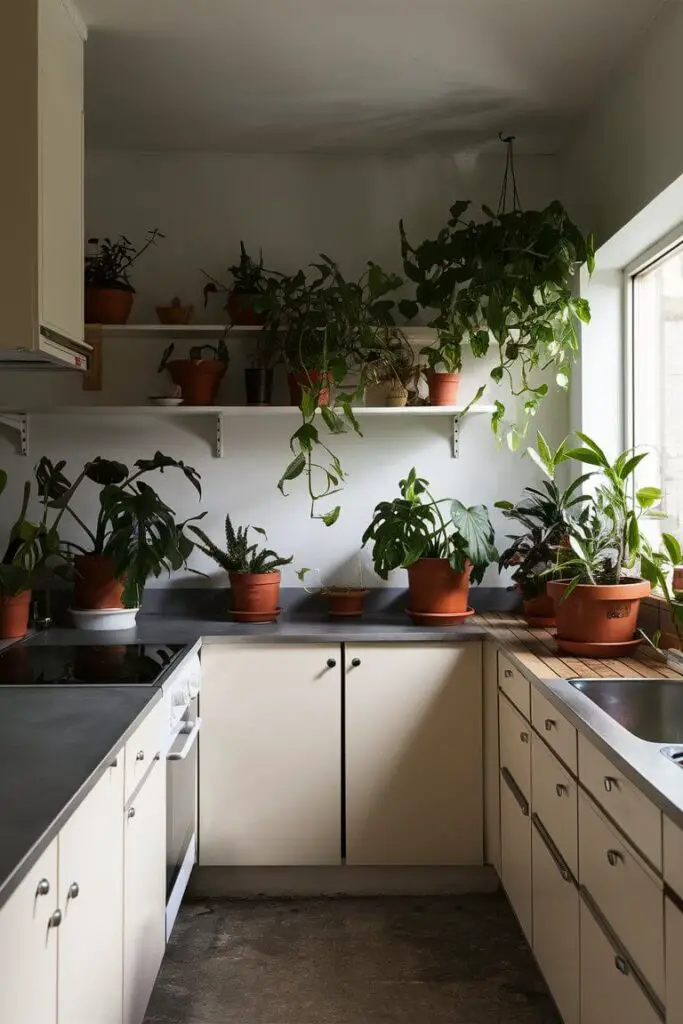
Incorporate indoor plants to bring life and freshness to the kitchen.
Choose low-maintenance plants like succulents or small potted herbs to maintain the minimalist aesthetic.
6. Opt for Streamlined Appliances
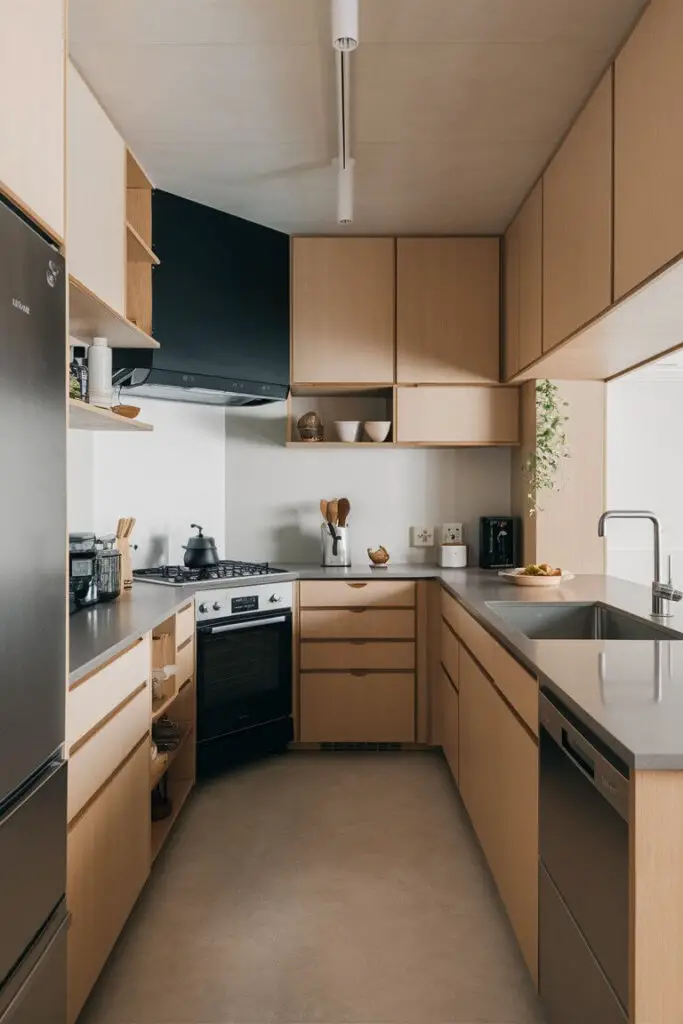
Select sleek and modern appliances that blend seamlessly with the kitchen design.
Stainless steel or matte black finishes work well in a Japandi kitchen, maintaining a clean and cohesive look.
7. Include Wooden Elements
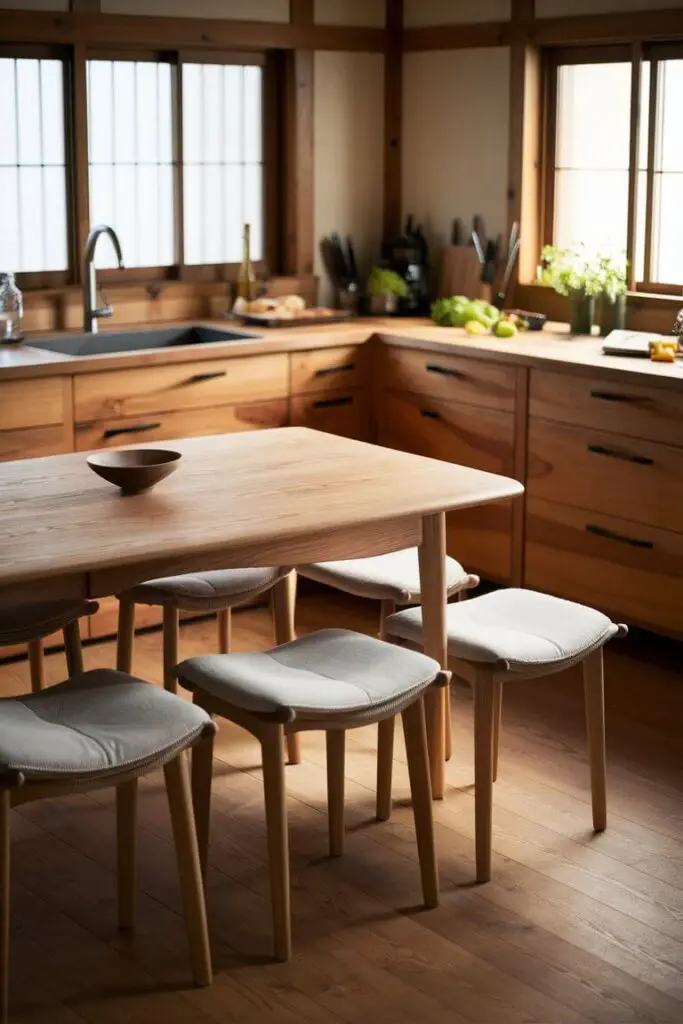
Add wooden elements like butcher block countertops, wooden stools, or a wooden dining table.
The warmth of the wood contrasts beautifully with the neutral color palette, creating a cozy and inviting space.
8. Focus on Functionality
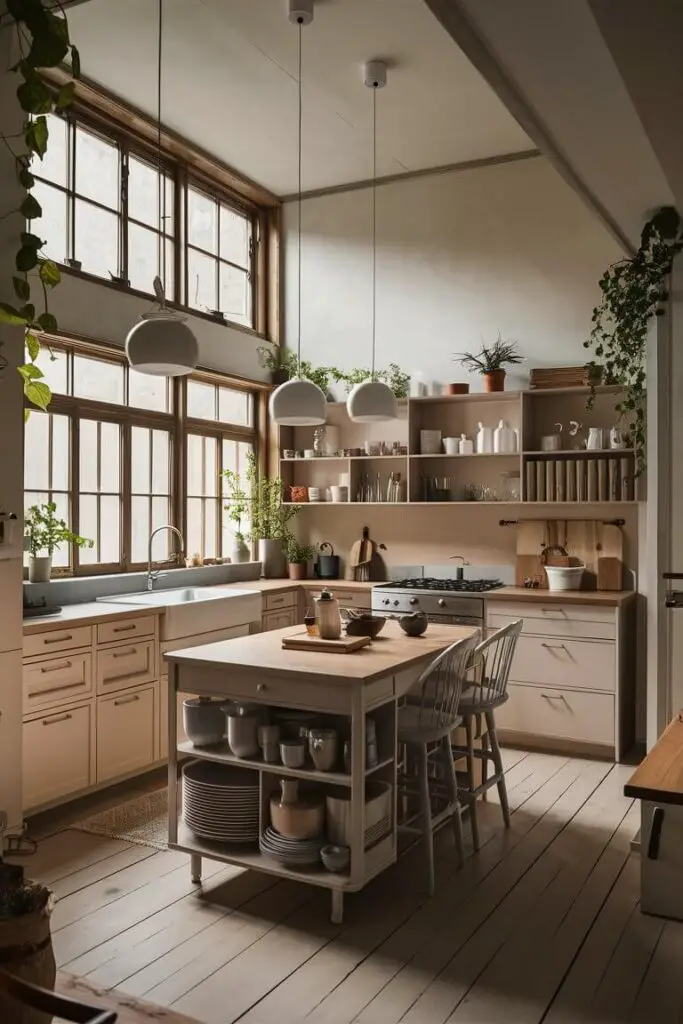
Prioritize functional design by ensuring that every element in the kitchen serves a purpose.
Opt for multi-functional furniture and smart storage solutions to keep the space practical and efficient.
9. Incorporate Textures
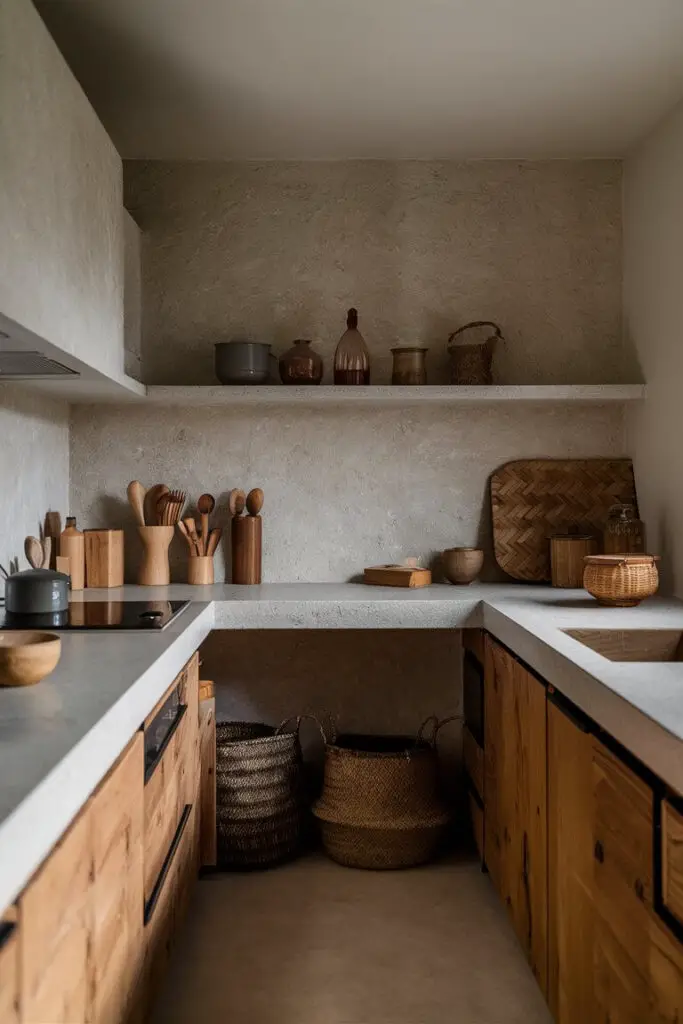
Mix different textures to add depth and interest to the kitchen.
Combine smooth surfaces like stone countertops with rougher textures like woven baskets or wooden utensils for a balanced look.
10. Install Pendant Lighting
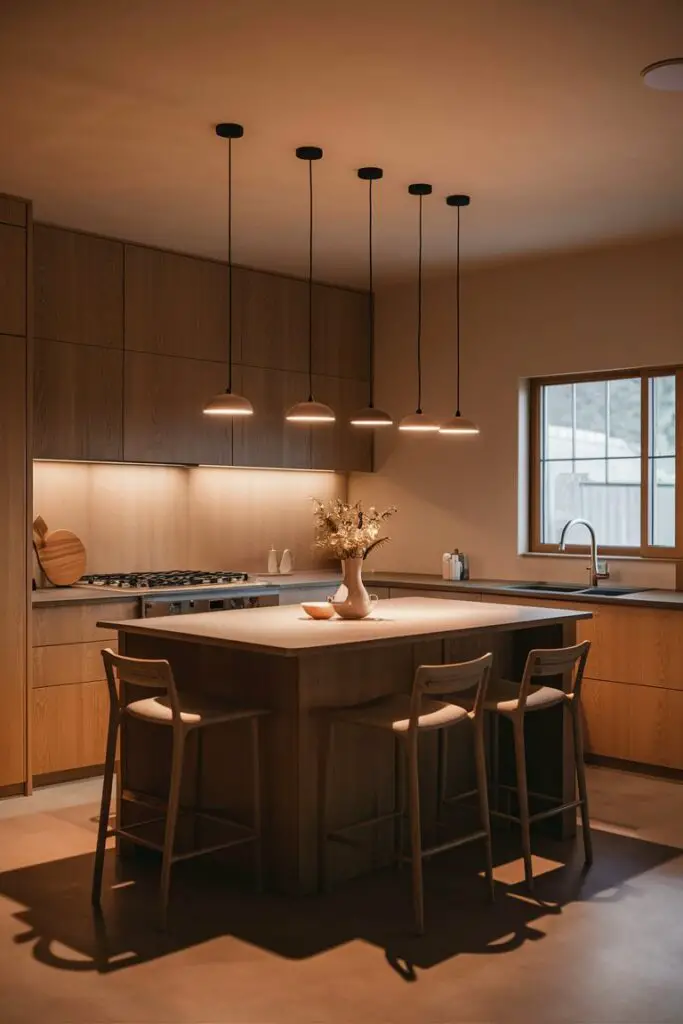
Choose simple and elegant pendant lights to illuminate the kitchen.
Soft, warm lighting enhances the cozy atmosphere and highlights the natural materials used in the space.
11. Blend Japanese and Scandinavian Decor
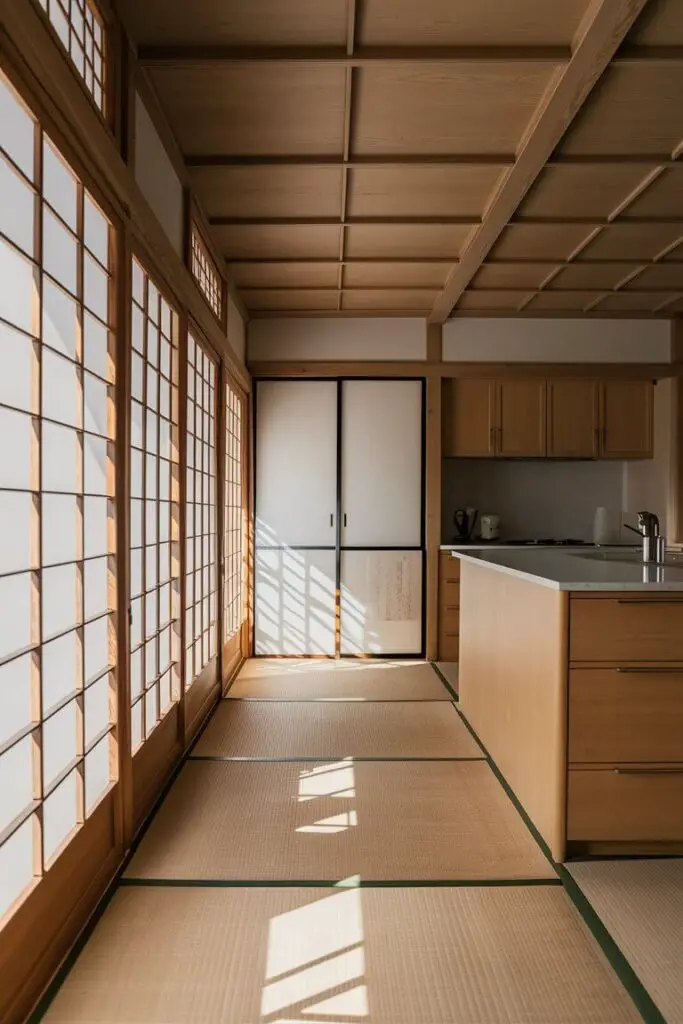
Combine Japanese and Scandinavian decor elements to create a harmonious look.
Use shoji screens, tatami mats, and minimalist Scandinavian furniture to achieve the perfect Japandi style.
12. Opt for Hidden Storage

Keep the kitchen clutter-free by incorporating hidden storage solutions.
Use pull-out cabinets, concealed drawers, and built-in organizers to maintain a clean and streamlined appearance.
13. Use Light Wood Tones

Choose light wood tones for cabinetry and furniture to enhance the airy and open feel of the kitchen.
Light oak, ash, or pine wood works well in a Japandi kitchen, adding warmth without overwhelming the space.
14. Add Subtle Accents
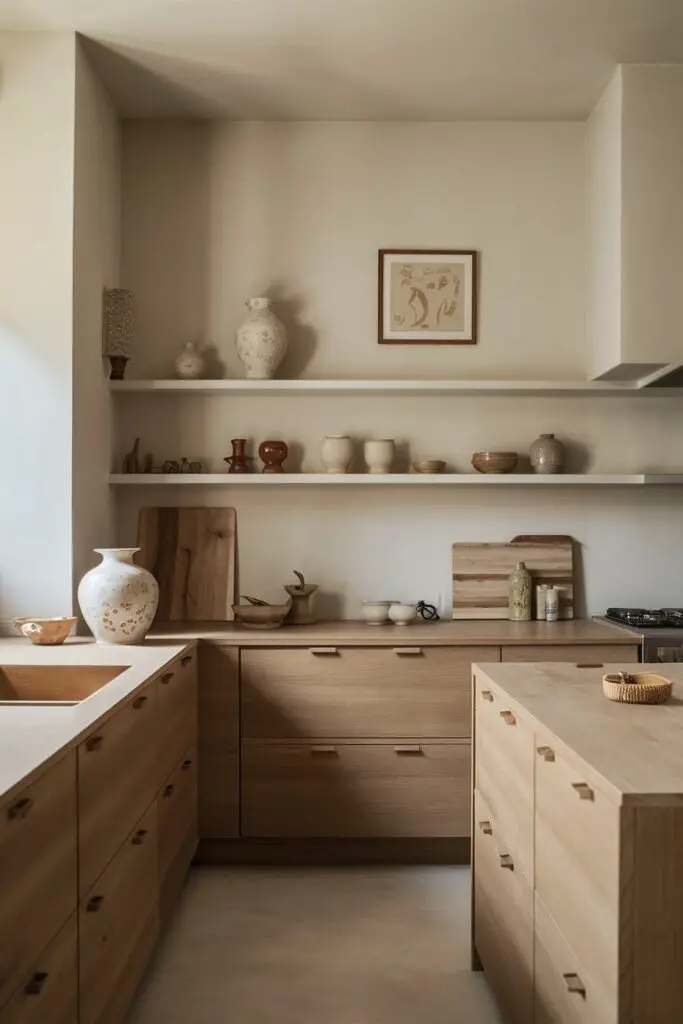
Incorporate subtle decorative accents like ceramic vases, simple artwork, or minimalist kitchenware.
These small touches add personality without disrupting the minimalist aesthetic.
15. Create a Zen Corner
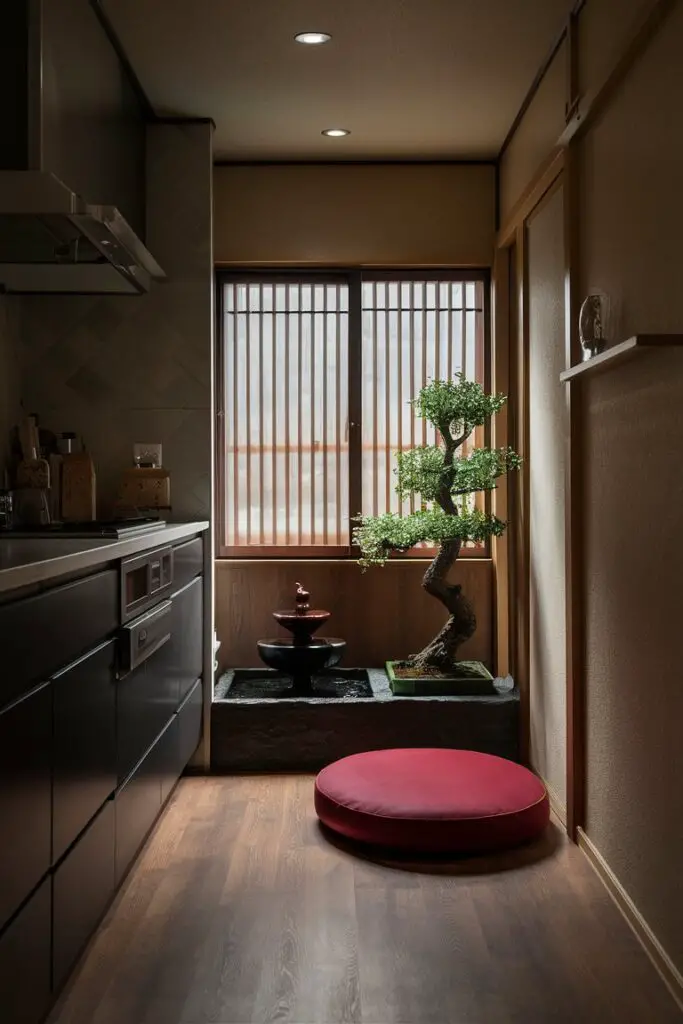
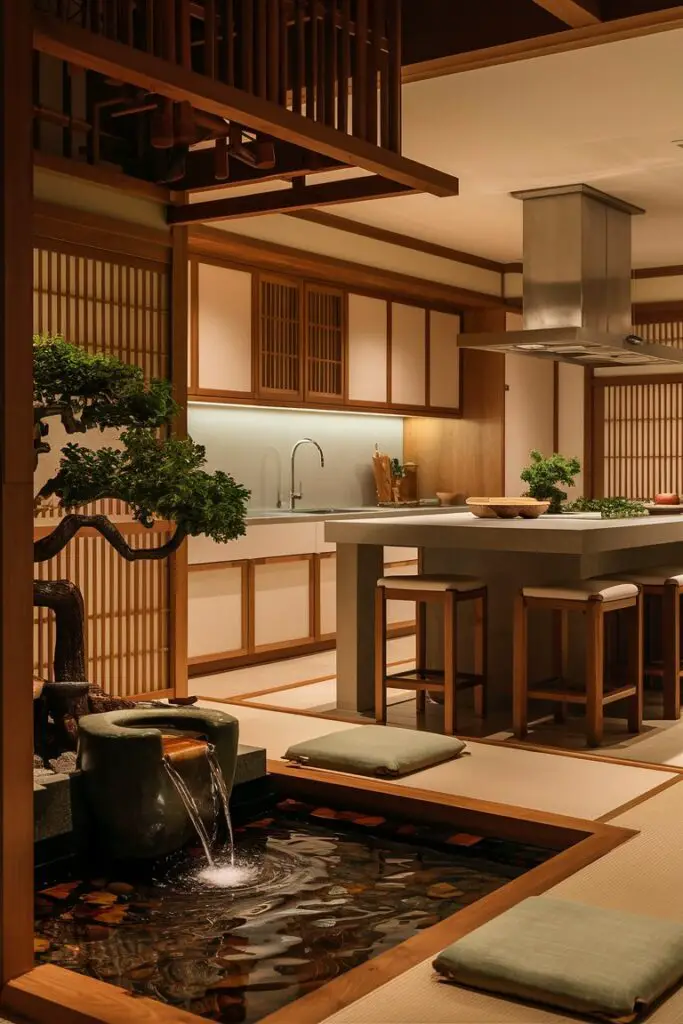
Designate a small corner of the kitchen for a Zen-inspired space.
Add a small indoor fountain, a bonsai tree, or a meditation cushion to create a peaceful retreat within the kitchen.
16. Opt for Clean Lines
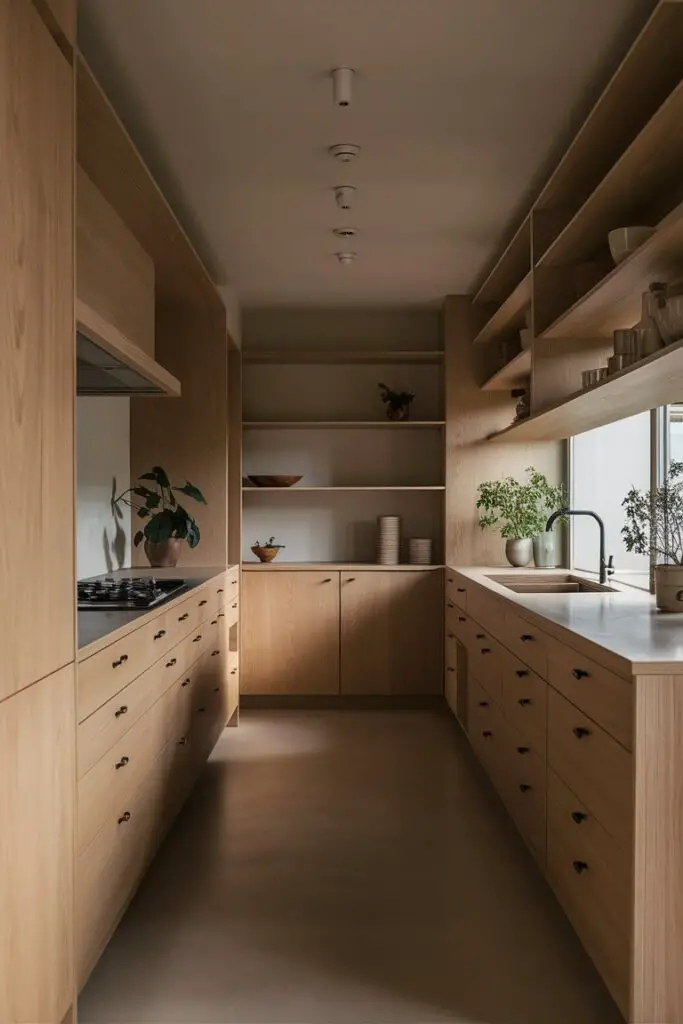
Choose furniture and cabinetry with clean, straight lines.
Avoid ornate designs and intricate details, as the Japandi style emphasizes simplicity and minimalism.
17. Incorporate Sliding Doors

Use sliding doors instead of traditional hinged doors to save space and add a touch of Japanese influence.
Sliding doors are practical and enhance the clean lines of the kitchen.
18. Choose Matte Finishes
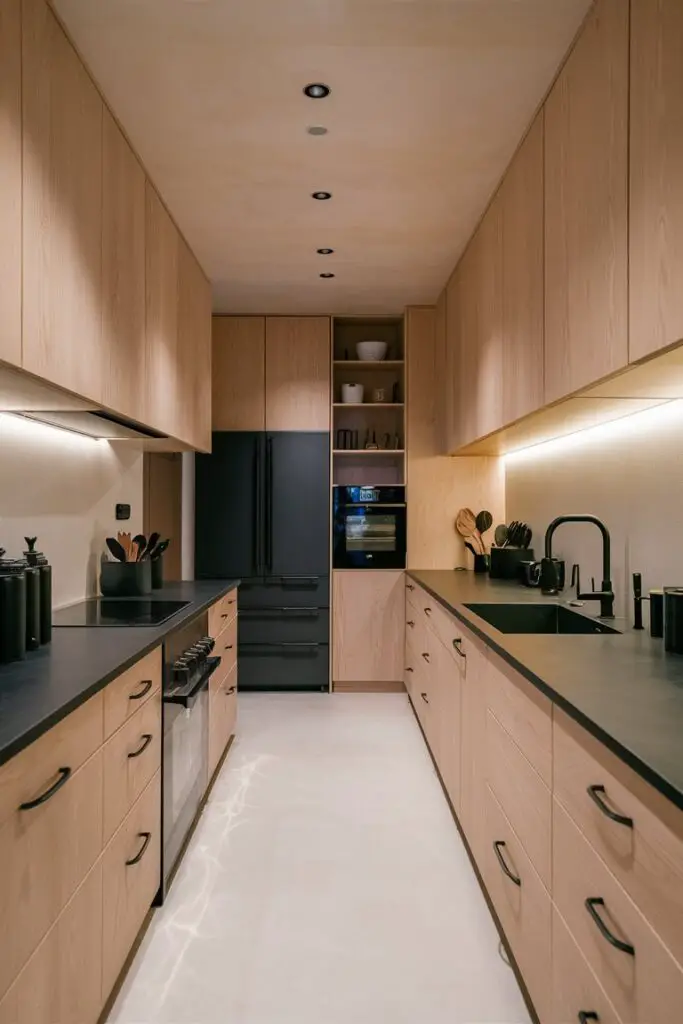
Opt for matte finishes for cabinets, countertops, and appliances.
Matte surfaces create a sophisticated and modern look, complementing the minimalist design.
19. Add a Touch of Black
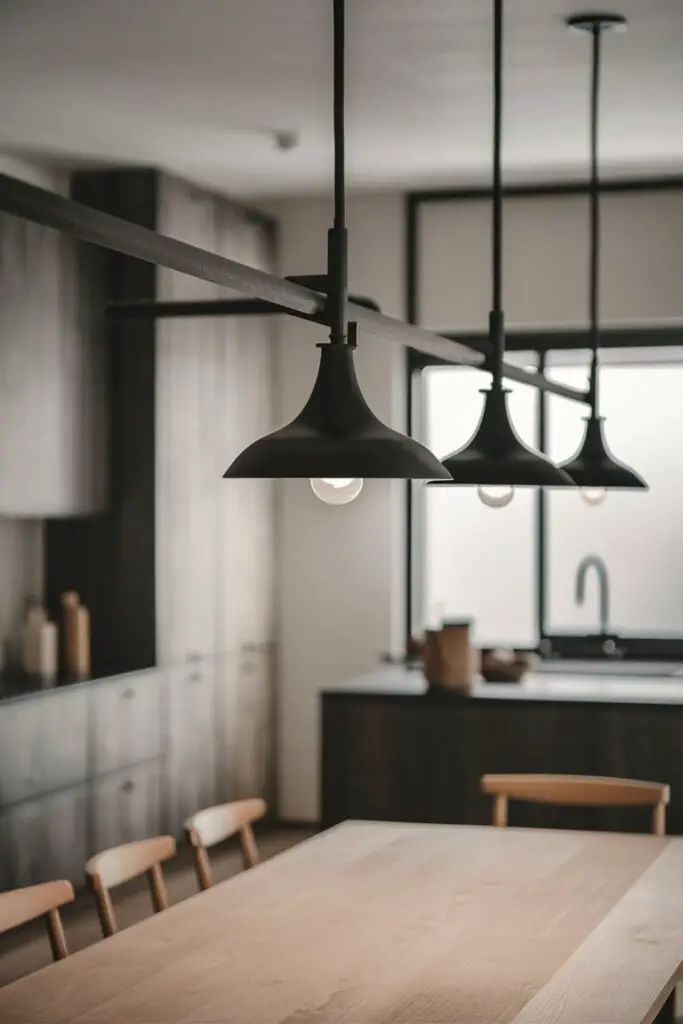
Incorporate black accents to add contrast and depth to the neutral palette.
Use black hardware, light fixtures, or small decor items to create a striking yet subtle effect.
20. Integrate Natural Light

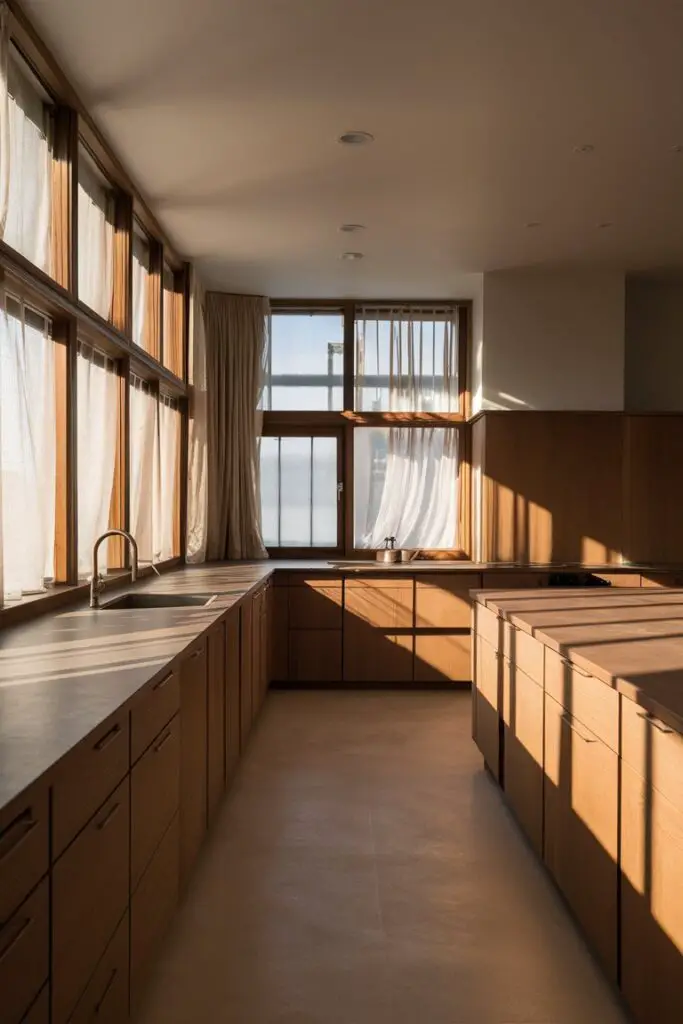
Maximize natural light to enhance the open and airy feel of the kitchen.
Use sheer curtains or no window treatments to allow sunlight to flood the space, making it feel larger and more inviting.
21. Choose Simple Hardware
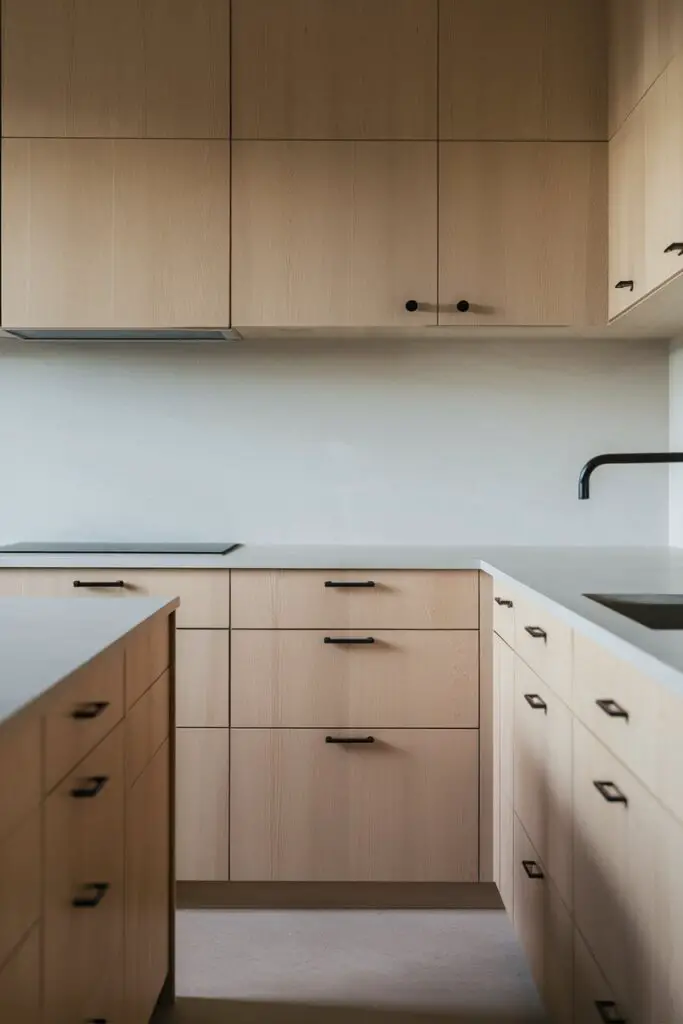
Select simple and sleek hardware for cabinets and drawers.
Minimalist handles and knobs in matte black or brushed nickel maintain the clean and uncluttered look of the Japandi style.
22. Incorporate Built-In Seating
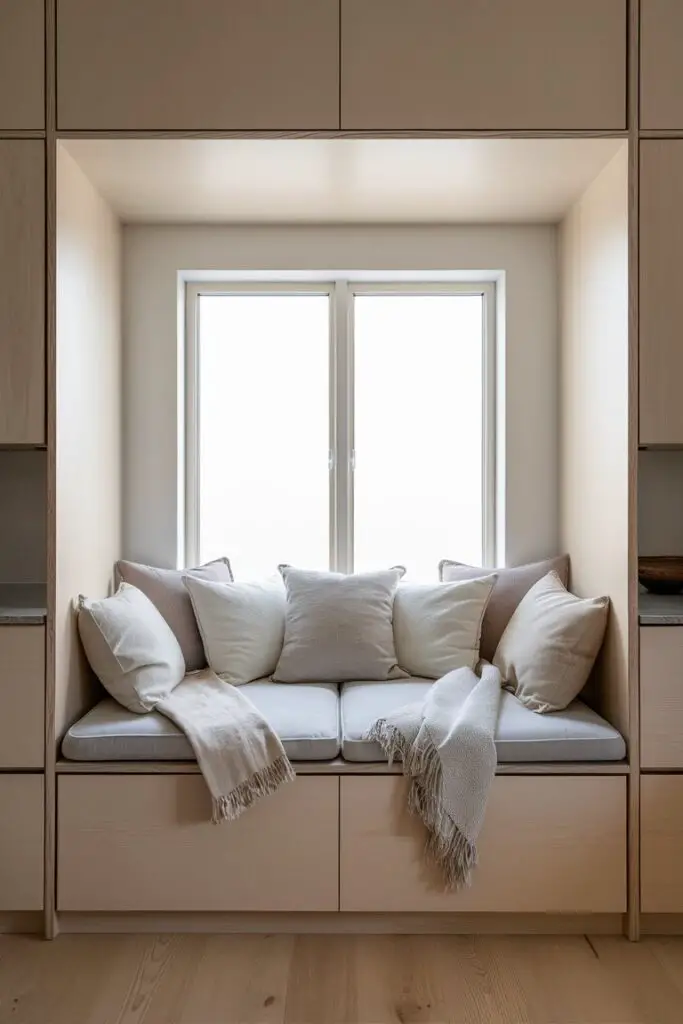
Add built-in seating, such as a breakfast nook or a window seat, to create cozy and functional dining areas.
Use simple cushions and throws in neutral colors to keep the look cohesive.
23. Use Geometric Shapes
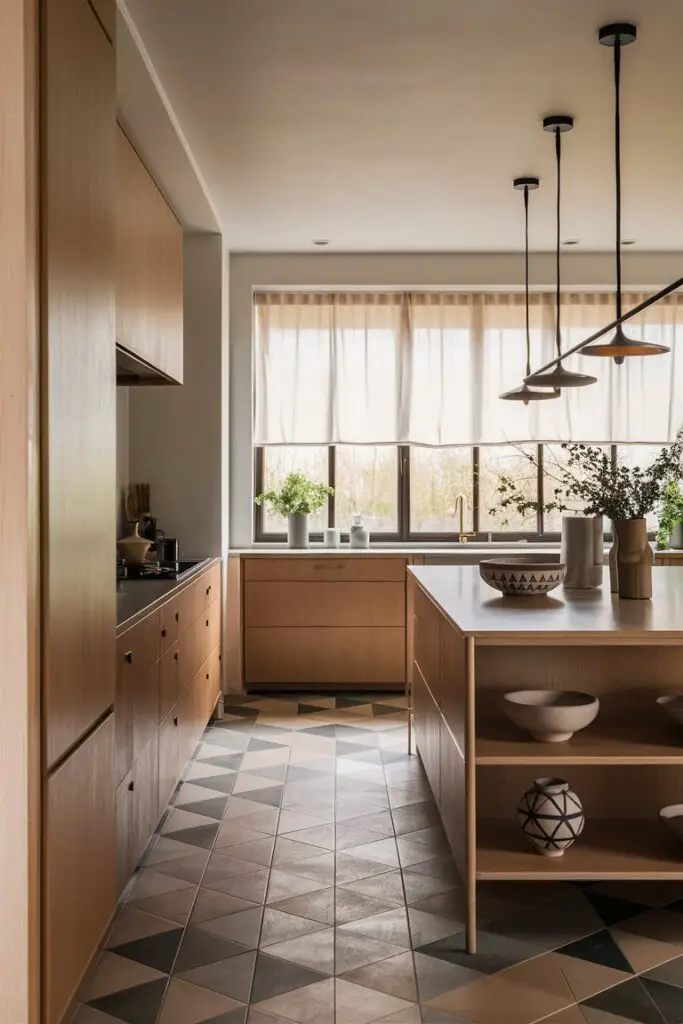
Incorporate geometric shapes in the design elements, such as tile patterns, light fixtures, or decor items.
Geometric shapes add visual interest while maintaining the minimalist aesthetic.
24. Add Wabi-Sabi Elements
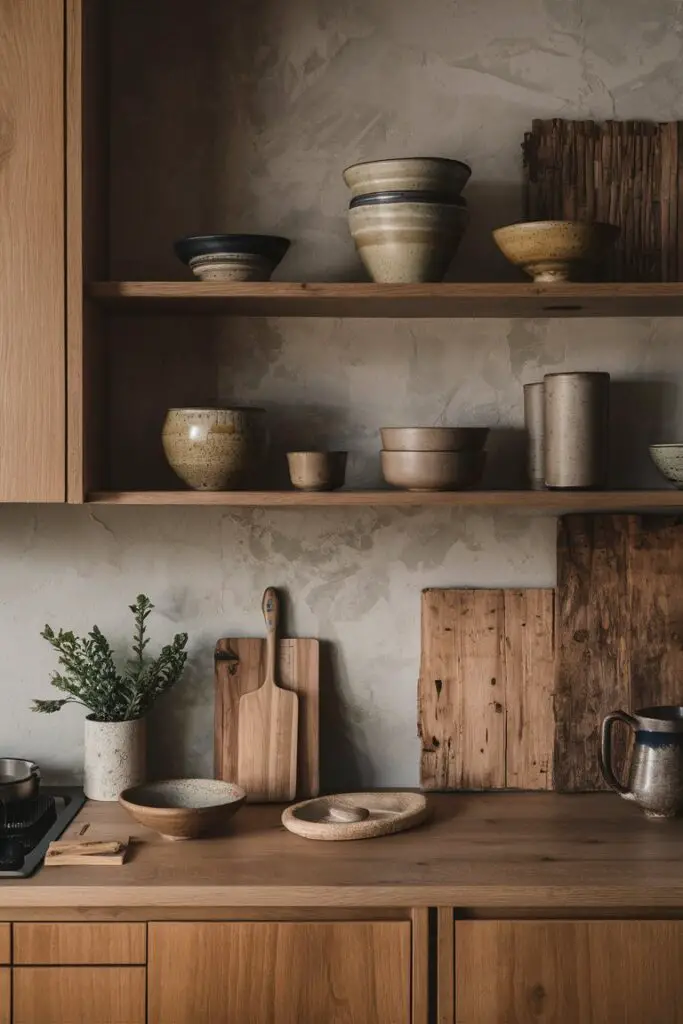
Embrace the Japanese concept of Wabi-Sabi by incorporating imperfect and natural elements.
Use handmade ceramics, reclaimed wood, or textured fabrics to celebrate the beauty of imperfection.
25. Keep It Clutter-Free
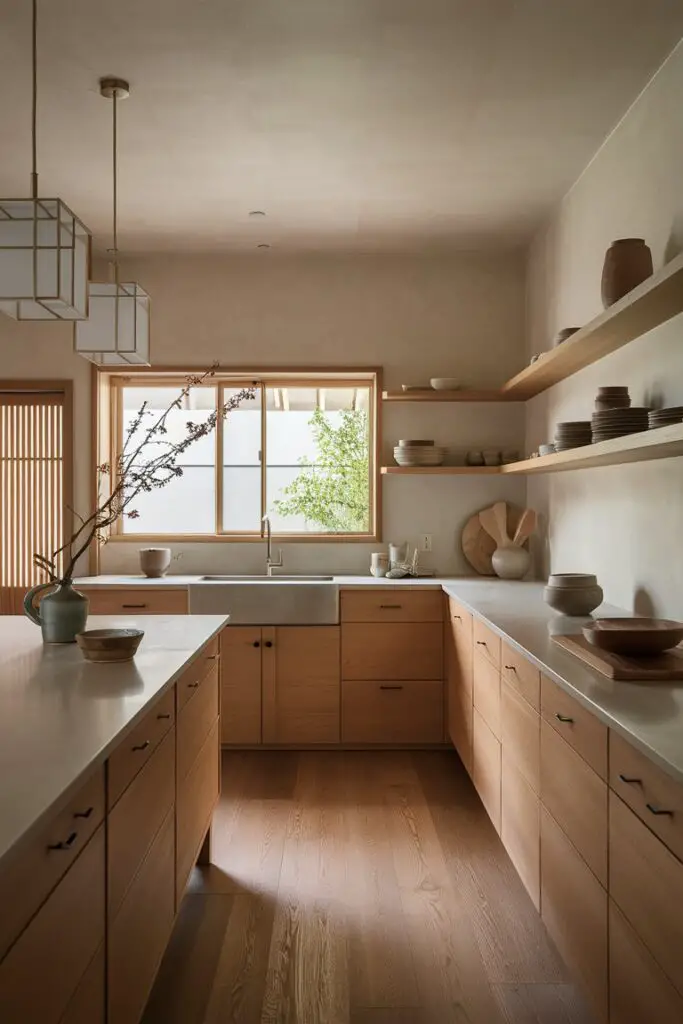
Maintain a clutter-free environment by regularly decluttering and organizing the kitchen.
Keep only essential items on display and store the rest out of sight to preserve the serene and minimalist atmosphere.
Wrap Up
Embrace Japandi style in your kitchen for a perfect blend of Japanese simplicity and Scandinavian coziness.
With these ideas, you can create a space that’s both functional and beautiful.
Happy decorating!

